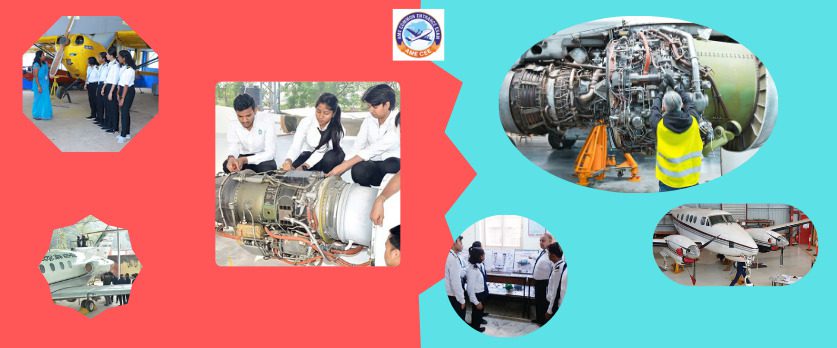Have you ever wondered where those unsung heroes, Aircraft Maintenance Engineers (AMEs), carry out their vital work? Let’s take a journey into the unique workplaces of AMEs and explore the fascinating locations where they ensure the safety and airworthiness of airplanes.
Hangar Haven: The Heart of Aircraft Maintenance
The hangar is the central hub where AMEs perform their magic. It’s like an enormous garage for airplanes. Here, you’ll find skilled AMEs inspecting, maintaining, and repairing aircraft, ensuring they are in top-notch condition for their next flight.
Tarmac Tales: Where Planes and AMEs Unite
Picture a bustling airport with planes taxiing and taking off. AMEs are often found working on the tarmac, conducting pre-flight inspections and addressing any last-minute concerns before airplanes embark on their journeys.
Aviation Workshops: Crafting Safety in Every Nut and Bolt
AMEs are like craftsmen, and their workshops are filled with the tools of their trade. These workshops are equipped with everything an AME needs to perform maintenance tasks, from fixing engines to troubleshooting avionics systems.
Aircraft Maintenance Facilities: Centers of Expertise
Major airports and aviation companies have dedicated maintenance facilities. These are like advanced workshops on a larger scale, with specialized equipment and teams of AMEs ensuring that fleets of airplanes are kept in optimal condition.
Mobile Maintenance Units: AMEs on the Move
Sometimes, airplanes need maintenance, and they can’t come to the hangar. That’s where mobile maintenance units come in. AMEs travel to the aircraft, whether it’s at an airport or even on the tarmac, to perform necessary tasks.
Simulator Centers: Testing Skills Virtually
AMEs don’t just work with physical aircraft; they also use simulators. These centers replicate real-life scenarios, allowing AMEs to practice and enhance their skills in a virtual environment before applying them to actual planes.
Remote Locations: AMEs Where You Least Expect
Airplanes can land in unexpected places, and AMEs might need to go there too. From remote airstrips to unconventional locations, AMEs can find themselves working in diverse and sometimes unconventional settings.
Training Institutes: Nurturing the Next Generation
Some AMEs dedicate part of their careers to educating and training the next generation of aviation professionals. Training institutes become their workplace, where they impart their knowledge and expertise to aspiring AMEs.
Airline Operations Centers: Coordinating Maintenance Efforts
Airline operations centers serve as nerve centers for managing flights. AMEs collaborate with other aviation professionals in these centers, ensuring that maintenance efforts are seamlessly integrated into overall flight operations.
Beyond Borders: International Opportunities
The world of aviation knows no borders, and neither do AMEs. They might find themselves working internationally, contributing their skills to ensure the safety and airworthiness of airplanes on a global scale.
In essence, the workplace of an AME is as dynamic as the aviation industry itself. From hangars to tarmacs, workshops to remote locations, these dedicated professionals work in diverse settings, all with a singular goal – to keep the skies safe and airplanes ready for their next adventure.
To become an aircraft maintenance engineer you may could join AME engineering through AME COMMON ENTRANCE EXAM (AME CEE) this examination you may join AME engineering approved by DGCA, EASA or UGC.


